
views
Feeding a Pregnant Dog
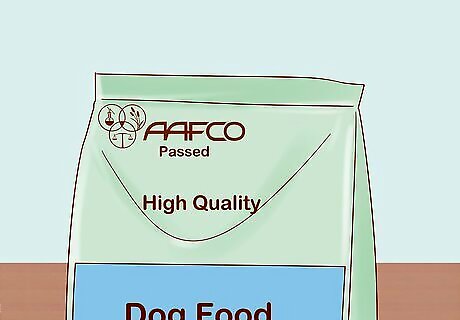
Check the label on the food you feed your dog. Ensure that the food has passed an AAFCO feeding test. The label should read, “Animal feeding tests using AAFCO procedures substantiate that _____ provides complete and balanced nutrition for ______.”
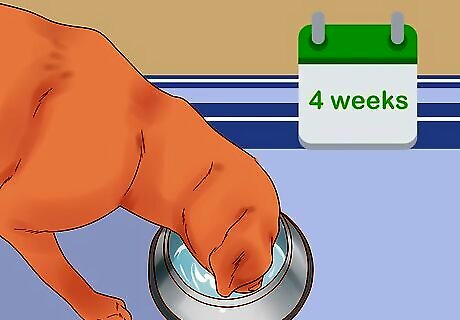
Feed a normal amount of high-quality commercial dog food for the first 4 weeks of pregnancy. Commercial dog foods are sold at pet food and grocery stores. These foods typically contain all necessary nutrients in the correct amounts and ratios. Homemade foods often do not contain the proper balance of the necessary nutrients and should be avoided.
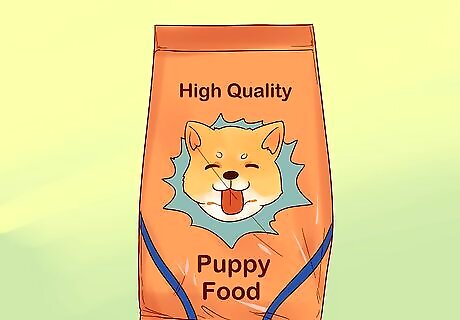
Switch to a high-quality puppy food during the 5th or 6th week of pregnancy. At this point in the pregnancy, your dog will have higher nutritional demands. Puppy food contains higher amounts of protein, fat, energy and minerals. At this point you should also increase the amount that you feed your dog by 20-25%. Do not feed large-breed dog or large-breed puppy foods, even if you have a large-breed dog. These foods typically do not contain enough energy or calcium for a pregnant dog.
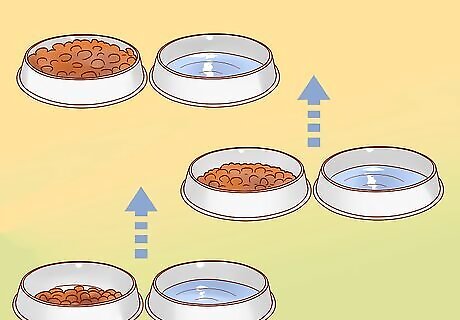
Increase the amount that you feed your dog by another 25% for the end of her pregnancy, during the 8th and 9th week. At this point your dog will be eating 50% more than she did before pregnancy. For example, if your dog ate 2 cups of food twice daily before she was pregnant, she will need 6 cups of food per day by the end of her pregnancy. Because the puppies will be pushing on her stomach, she may not be able to eat this much food in one meal. Dividing her food into smaller, more frequent meals will ensure that she gets all of her nutritional requirements. Some dogs need to be “free fed” at this point, meaning that their food is left down throughout the day to allow them to eat as needed.

Do not supplement your dog’s food with vitamins, minerals, or meats unless directed by your veterinarian. You may think that additional calcium is required, and some inaccurate websites even recommend it, but do not give your dog any additional calcium. Additional calcium can affect your dog’s internal ability to regulate calcium and can put your dog at risk for a life-threatening drop in calcium (called eclampsia). Adding meats to your dog’s food can cause them to eat fewer carbohydrates and decrease her energy intake.
Providing Health Care For a Pregnant Dog
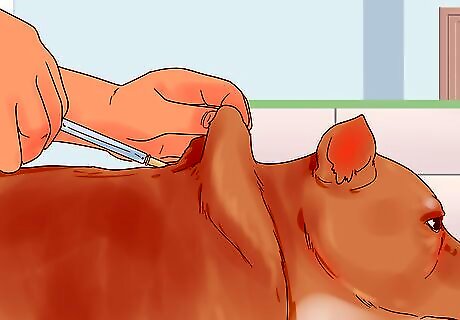
Get your dog proper prenatal care. Your dog should be vaccinated before she gets pregnant. This will protect your dog and your dog’s puppies. Newborn puppies have an increased risk getting serious (and even fatal) diseases if their mother is not vaccinated. Most experts advise against vaccinating pregnant dogs, so vaccines should be given ahead of time. Get your dog dewormed. Internal parasites (such as roundworms and hookworms) can pass from a mother to her puppies. Your dog’s veterinarian will prescribe an appropriate medication that will protect both your dog and her puppies. Have a heartworm test performed by your vet and start an appropriate heartworm preventative. Heartworm microfilaria can pass from a dog to her unborn puppies through the placenta.
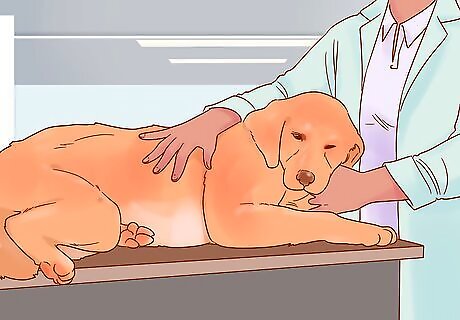
See your veterinarian if you believe that your dog may be pregnant. Your veterinarian can help you verify the pregnancy, determine the due date, discuss any medication changes, and even estimate the number of expected puppies. Your veterinarian can also help you determine if your dog is having a false pregnancy, a condition in which she looks and acts pregnant when she’s not. Ultrasound machines can visualize puppy embryos approximately 3 weeks into the pregnancy. Your veterinarian may be able to feel the puppies inside your dog’s belly 20-30 days into the pregnancy. Unborn puppies can be seen on x-rays after 45 days (5 weeks) of pregnancy. Your veterinarian will count the fetal skeletons to determine the number of expected puppies. This way, you will know if all the puppies have been delivered successfully when your dog gives birth. If you are expecting 6 puppies but only 4 are born, you will know to take your dog in for emergency medical care.
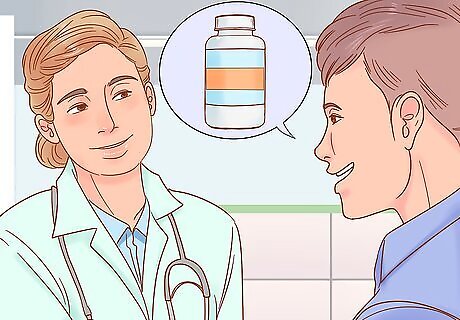
Talk to your veterinarian about ALL medications and treatments that you give your dog. Some medications can be dangerous to the unborn puppies and can cause birth defects and even death. For instance, veterinarians typically recommend that you keep your dog on their monthly heartworm preventatives, but talk to your veterinarian to be certain. Talk to your veterinarian about your dog’s flea and tick treatments and her risk for these parasites. Your veterinarian will recommend an appropriate product if treatment is indicated. Examples of products that your veterinarian may recommend for your pregnant dog include FrontlineⓇ Plus Topspot (but not FrontlineⓇ Spray), RevolutionⓇ, ProgramⓇ, and CapstarⓇ. Your veterinarian may recommend a dewormer during the last third of your dog’s pregnancy. Fenbendazole is typically considered safe for pregnant dogs and can treat worms that can be passed from a dog to her puppies. Do not give any over-the-counter medications, treatments, or supplements to your dog without asking your veterinarian whether they are safe during pregnancy. Do not vaccinate your pregnant dog. Talk to your veterinarian about vaccinations if your dog is pregnant and is overdue on vaccines. If your dog is on long-term medications for a chronic disease, talk to your veterinarian immediately to determine if you should continue or stop the medications.
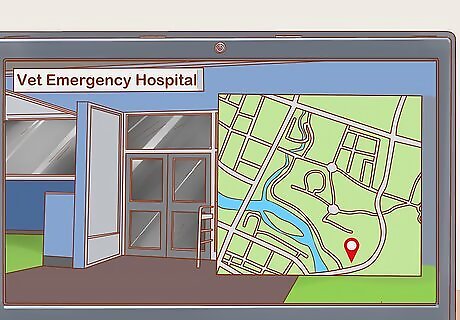
Make sure you know where the nearest Vet Emergency hospital is located. This should be a 24 hr clinic, not your regular vet office. It is best to be prepared for an emergency, just in case your dog is giving birth in the evening and she has serious complications.
Exercising a Pregnant Dog

Do not overexert your pregnant dog. This is particularly important after the 6th week of pregnancy. Allow her to rest as long as she needs to, as pregnancy can be exhausting. If you have a working dog, talk to your veterinarian about an appropriate exercise plan.

Continue daily walks. Daily walks are a great low-intensity exercise for your pregnant dog. Most dogs can continue daily walks throughout their pregnancy. Choose an appropriate time of day for the weather in your neighborhood (ie, early morning during the summer or mid-afternoon in the winter). If your dog jogged regularly before getting pregnant, she can continue to do so for the first 4-6 weeks of pregnancy. After the 6th week, however, discontinue jogging in favor of daily walks.
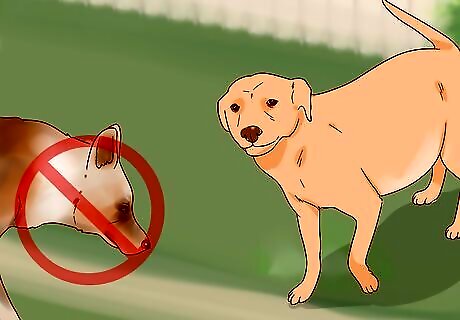
Keep your dog away from other dogs during the last 3 weeks of pregnancy and for the first 3 weeks after she gives birth. This means that you should avoid taking her to the dog park or on routes in your neighborhood that are heavily populated with dogs. This will help keep her protected from infectious diseases that could seriously harm both her and her puppies. Also, pregnant dogs and dogs with young puppies can have behavior changes. Your dog may become aggressive towards other dogs if she feels that they are threatening her puppies.
Providing a Whelping Box
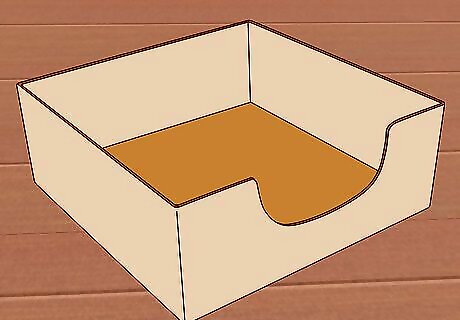
Buy or make a whelping box. The whelping box will serve as a safe place or “den” for your dog to deliver her puppies. It consists of a soft bed area surrounded by relatively high walls. You can make one out of plywood or firm plastic, or you can buy a commercially available box. The whelping box needs to be large enough to allow your dog to fully stretch out and still leave room for all of the puppies. The walls of the box need to be high enough to prevent the puppies from climbing out when they are 6 weeks old, but short enough that their mother can leave as she desires. The walls need to be firm and secure enough that they will not collapse and squish the puppies. If you don’t provide a box, your dog may choose a less-than-desirable location on her own.

Make the box comfortable for your dog and her puppies. Line the bottom of the box with towels. Replace and wash the towels frequently after the puppies arrive. Both delivery and the puppies can make a mess, so plan accordingly. Lining the box with newspaper is not recommended because it is neither soft nor warm, and newspaper ink can transfer to the puppies’ fur. Keep the floor of the box is around 75 °F (24 °C) by using low wattage light bulbs. For your dog’s and the puppies’ safety, make sure that the floor doesn’t get too hot or too cold.

Place the box in a familiar yet private location. You will need to access the site frequently to assist your dog, but it should be tucked away from distractions and other pets. Allow your dog access to her whelping box for at least 1-2 weeks before she delivers. This will help her become comfortable with box when it is time to have the puppies.
Preparing to Breed a Dog

Ensure that your dog is a good breeding candidate. Many canine diseases can pass from a mother dog to her puppies. Have your veterinarian examine your dog before you breed her to minimize the risk of passing a genetic disease to the puppies. Heritable diseases can affect the bones, joints, heart, teeth, skin, blood cells, kidneys, liver, nervous system (brain and spinal cord), digestive tract, reproductive organs, and the immune system. Some common examples include hip dysplasia, allergies, cryptorchidism, and hernias. Certain breeds have an increased risk of heritable diseases. Think about your dog’s (and the male dog’s) personality and behavior. Some scientific studies show that aggression can be genetic. You should breed friendly dogs that do not have aggressive tendencies.
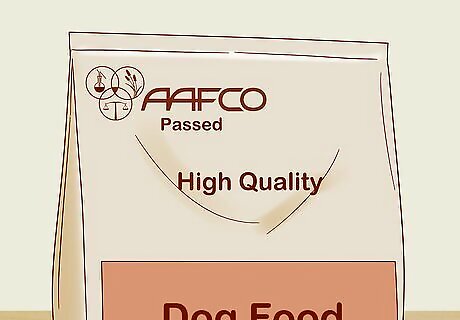
Feed your dog a high-quality dog food that has passed the American Association of Feed Control Officials (AAFCO) feeding tests. Foods that have passed the AAFCO feeding tests will read, “Animal feeding tests using AAFCO procedures substantiate that _____ provides complete and balanced nutrition for ______ .” Feeding your dog high-quality food prior to pregnancy can improve her and her puppies’ health.

Know the facts before breeding. Although puppies are very cute, they also require a lot of time, attention, and clean-up. Puppies typically stay with their mother for 8 weeks after birth, longer if you have trouble finding them a home. Raising multiple puppies will take a lot of your time and energy, not to mention it can be expensive. If your dog has trouble delivering her puppies, emergency veterinary treatment will be necessary. Cesarean sections (C-sections) can be very expensive, so be prepared to shell out some cash if there is an emergency.

Consider adopting a shelter dog instead of breeding. There is a dog overpopulation problem in the United States, meaning that there are more dogs than there are homes for them. According to the ASPCA, 1,200,000 dogs are euthanized in shelters each year. For each puppy that your dog delivers, there could be one less home available for a shelter dog.




















Comments
0 comment